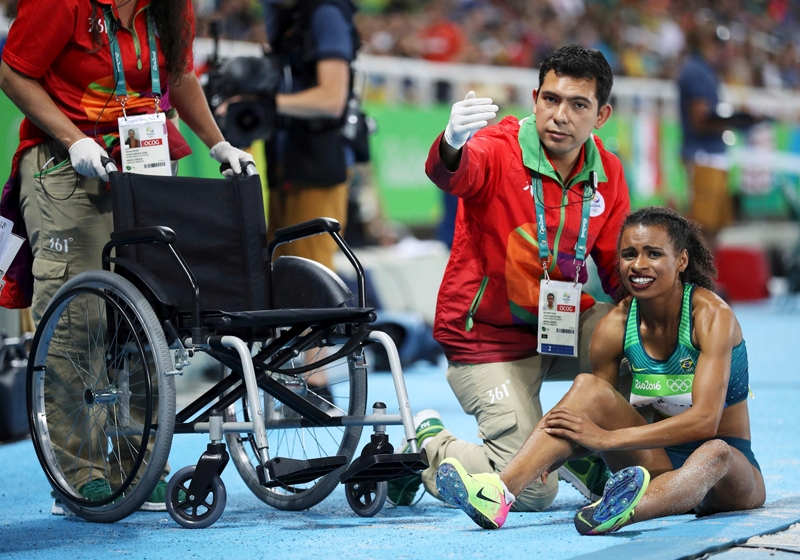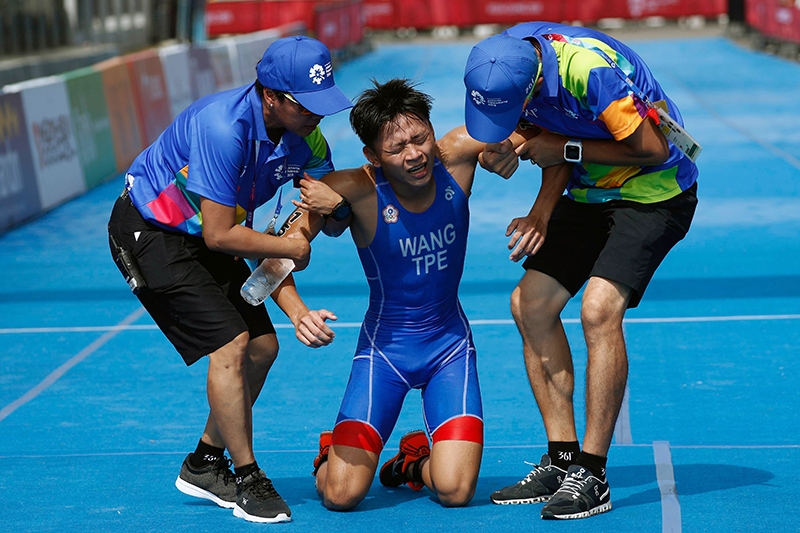You are viewing 1 of your 1 free articles. For unlimited access take a risk-free trial
Research review: new thinking on training load and injuries

It was just a couple of weeks ago in this article that Peak performance reported on new research into the ‘acute to chronic workload ratio’ (ACWR), and how its use to formulate an injury-free training program might not be as effective as originally believed. To recap briefly, The premise of the ACWR formula is that an athlete’s injury risk can be predicted by calculating the ratio between acute training loads (training performed over the past week) and chronic training loads (average training accumulated over a longer period of time – usually estimated at four weeks) – see figure 1.
Figure 1: Relationship between the acute to chronic workload ratio (ACWR) and injury risk

The sweet spot is a ratio of between 0.8 and 1.3. The ACWR theory proposes that training for a week at less than 80% or more than 130% of the average workload for the previous four weeks increases injury risk.
The theory is that if the acute training load is too high in relation to the chronic training load, the athlete is doing much more training than usual – ie creating a ‘spike’ in training load. These training load spikes are viewed as high risk for injury. However, if the acute training load is much lower than the chronic training load, this represents a state of detraining, where athletes may be at increased risk of injury because they are not being adequately prepared for the demands of the sport they play. As we reported however, a study on 18 soccer teams over a whole 10-month season found that formulating training loads using the ACWR formula did not result in reduced injury risk compared to a conventional approach [Br J Sports Med . 2020 Oct 9;bjsports-2020-103003].
Further doubts about ACWR
Now, a new study on ACWR to determine safe training loads has raised further doubts about its validity [Front Physiol. 2020; 11: 1034. doi: 10.3389/fphys.2020.01034]. In this study, French sports scientists studied national-level soccer players and international-level pentathletes in order to examine the relationships between the occurrence and severity of injuries using workload ratios. As well as using the ACWR formula, they also looked at two other calculations to determine changes in training load compared with previous training loads. These were the ‘Exponentially Weighted Moving Averages’ (EWMA), and the ‘Robust Exponential Decreasing Index’ (REDI). In all three cases, they looked to see whether the ‘sweet spot’ for reduced injury occurrence/severity was in the region of 0.8 – 1.3 (80-130% of previous training load).Over the study period (a whole season in both sets of athletes), a total of sixty-six injuries (2.75 per athlete) were reported in the soccer players and twelve in pentathletes (1.0 per athlete). The cumulative severity of all injuries was 788 days lost in soccer and 36 in pentathlon respectively with 11.9 days lost per injury in soccer player and 3.0 per pentathlete. However, when the data was analyzed, ten of the twelve injuries (83.3%) occurred in the presumed (0.8-1.3) sweet spot in the pentathletes, while in the soccer players, the majority of the injuries also occurred in the sweet spot, which also incurred a higher number of lost days of training/playing.
Implications for athletes and coaches
The researchers went onto conclude that because the greatest severity of injuries in soccer appeared in what has been considered the sweet spot, and that this zone also showed the highest number of injuries for pentathletes, there was simply no evidence that using these formulae to keep training loads in the sweet spot can automatically diminish injury risk. For athletes and coaches/trainers, this study provides further evidence that blindly following a training workload formula to maintain a 0.8-1.3 acute:chronic workload ratio is of itself not sufficient to guarantee reduced injury risk. Instead, the researchers urged that other factors affecting injury risk – eg injury history, sleep, fatigue, recovery, etc. – are given equal prominence when determining future training loads.Newsletter Sign Up
Testimonials
Dr. Alexandra Fandetti-Robin, Back & Body Chiropractic
Elspeth Cowell MSCh DpodM SRCh HCPC reg
William Hunter, Nuffield Health
Newsletter Sign Up
Coaches Testimonials
Dr. Alexandra Fandetti-Robin, Back & Body Chiropractic
Elspeth Cowell MSCh DpodM SRCh HCPC reg
William Hunter, Nuffield Health
Keep up with latest sports science research and apply it to maximize performance
Today you have the chance to join a group of athletes, and sports coaches/trainers who all have something special in common...
They use the latest research to improve performance for themselves and their clients - both athletes and sports teams - with help from global specialists in the fields of sports science, sports medicine and sports psychology.
They do this by reading Sports Performance Bulletin, an easy-to-digest but serious-minded journal dedicated to high performance sports. SPB offers a wealth of information and insight into the latest research, in an easily-accessible and understood format, along with a wealth of practical recommendations.
*includes 3 coaching manuals
Get Inspired
All the latest techniques and approaches
Sports Performance Bulletin helps dedicated endurance athletes improve their performance. Sense-checking the latest sports science research, and sourcing evidence and case studies to support findings, Sports Performance Bulletin turns proven insights into easily digestible practical advice. Supporting athletes, coaches and professionals who wish to ensure their guidance and programmes are kept right up to date and based on credible science.











